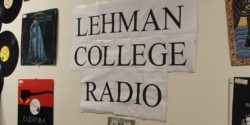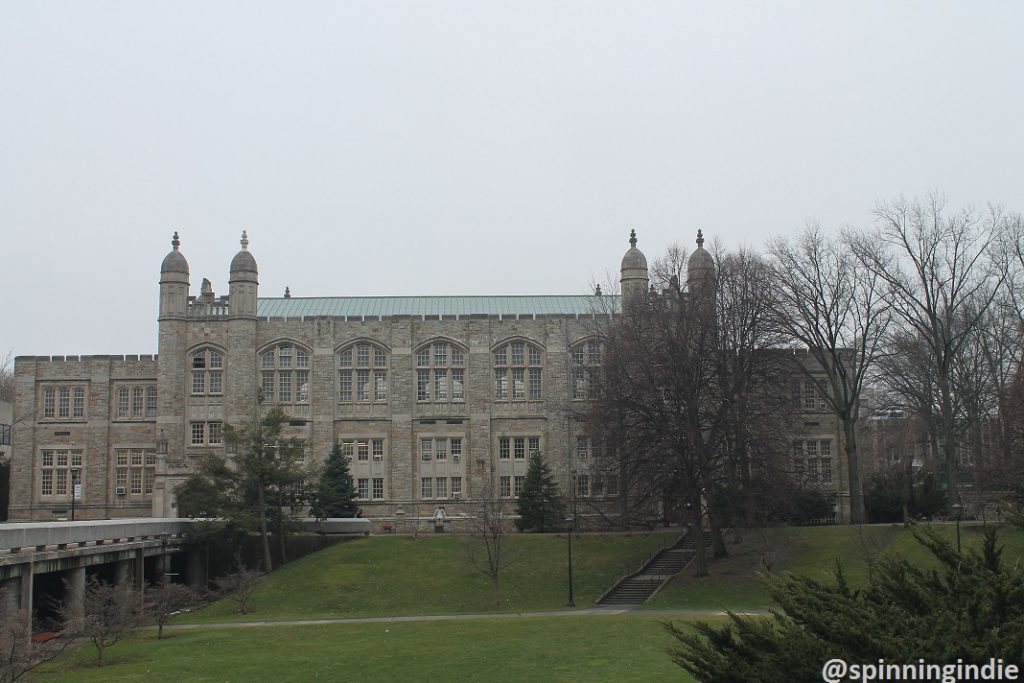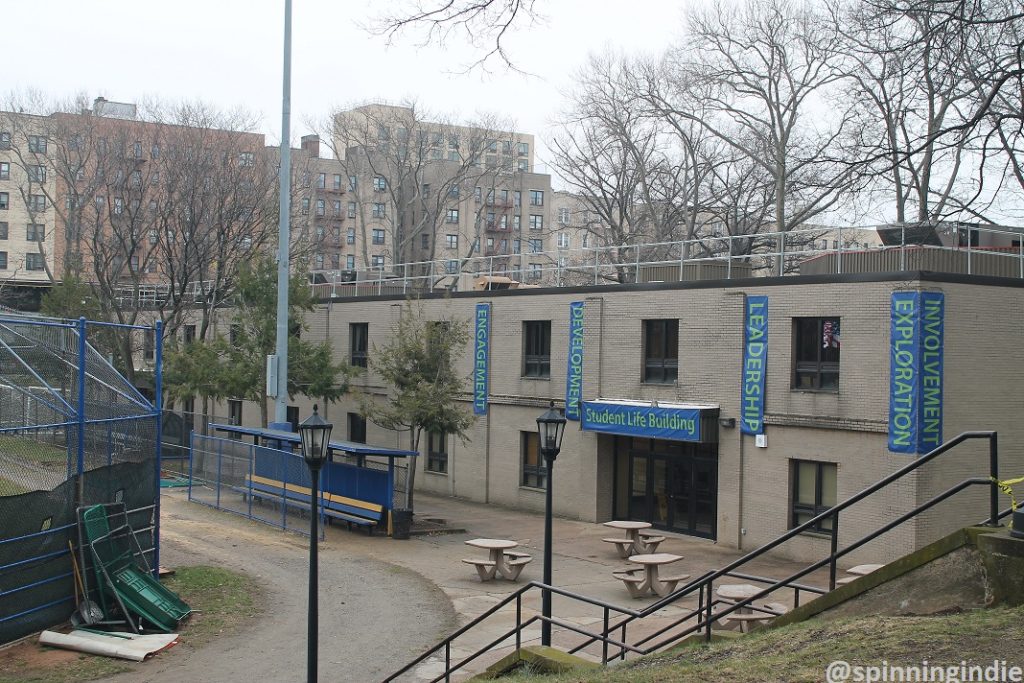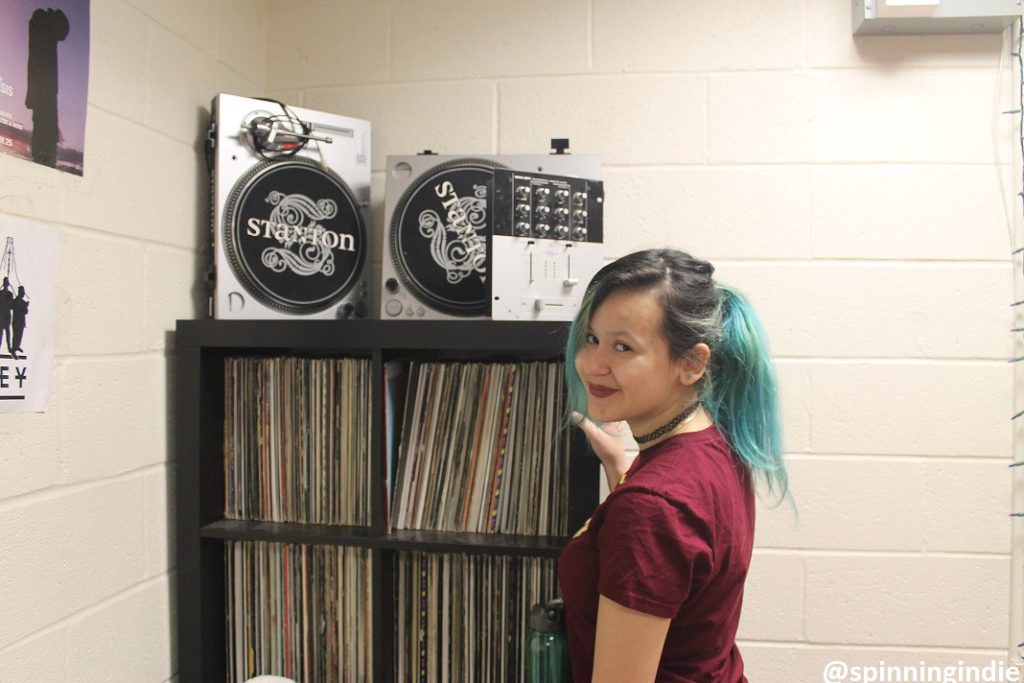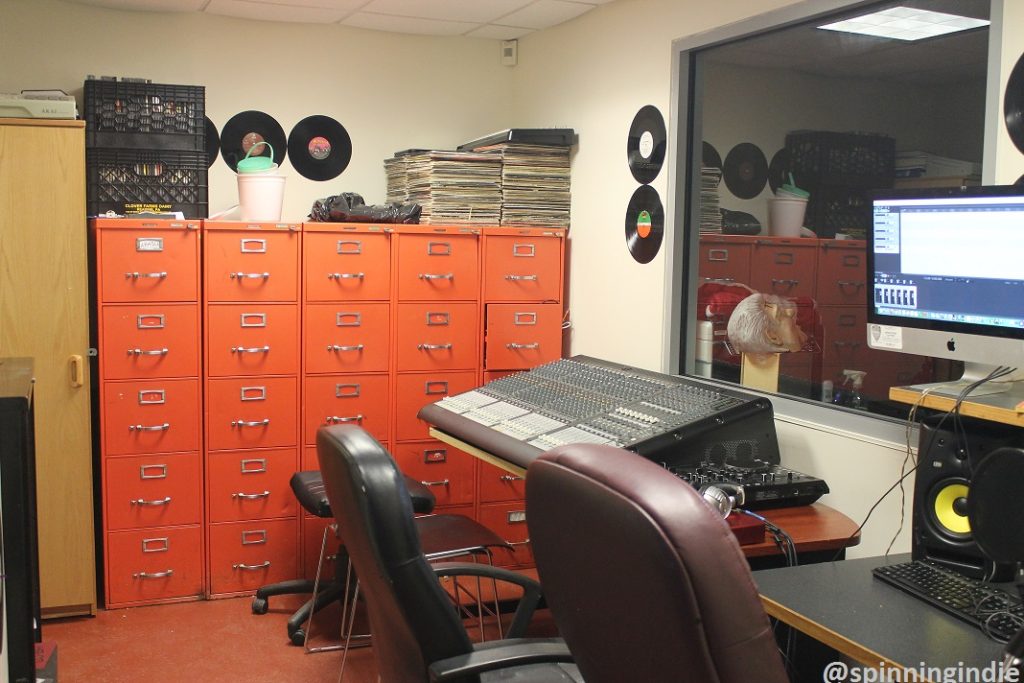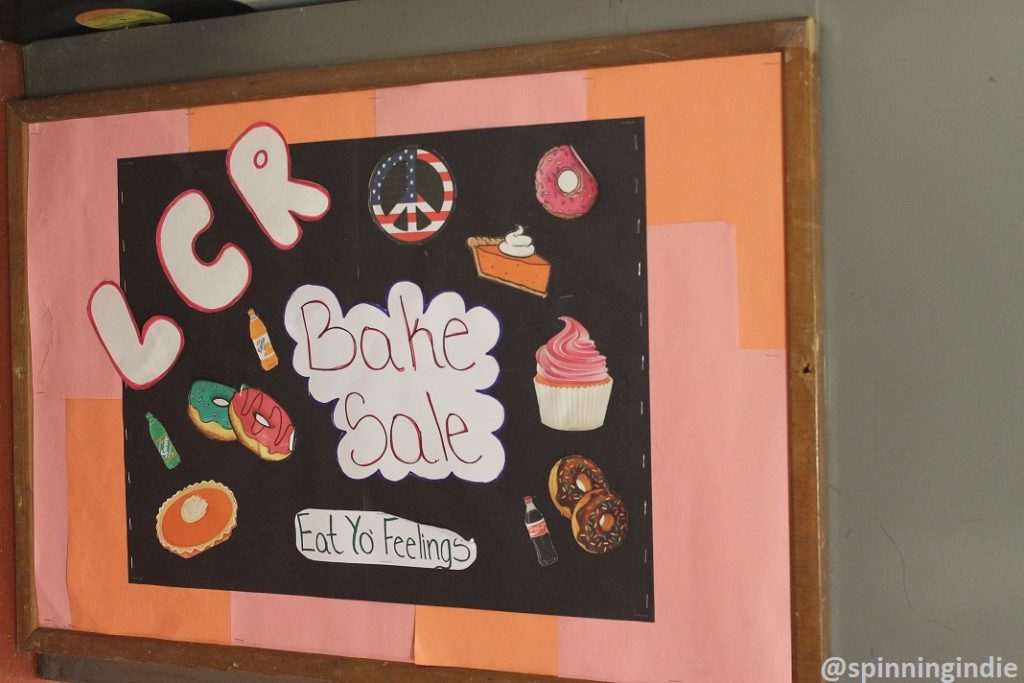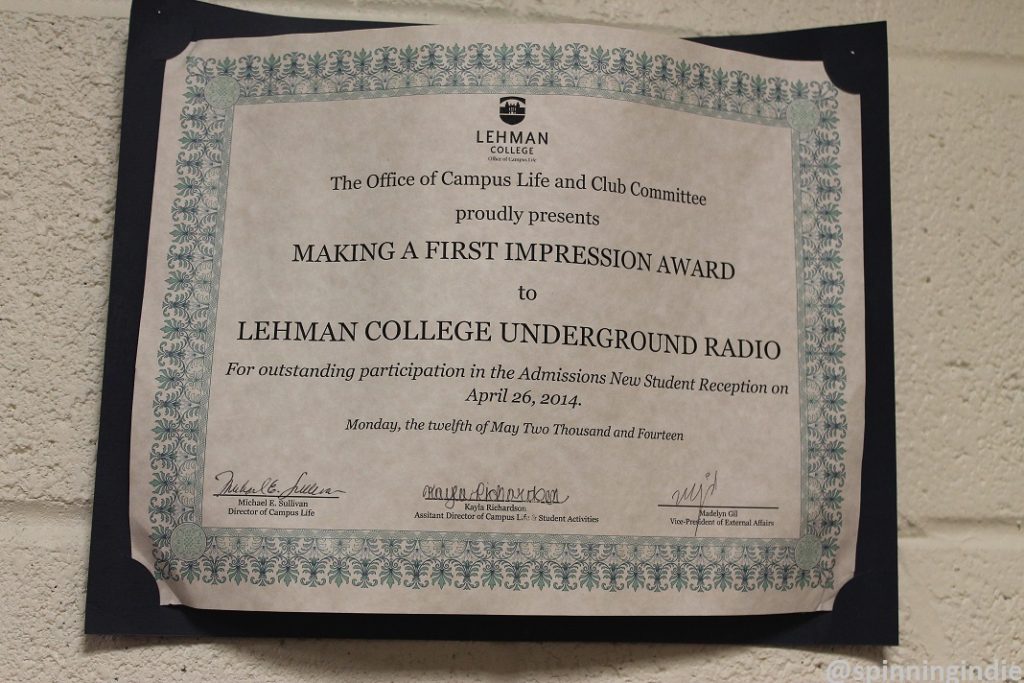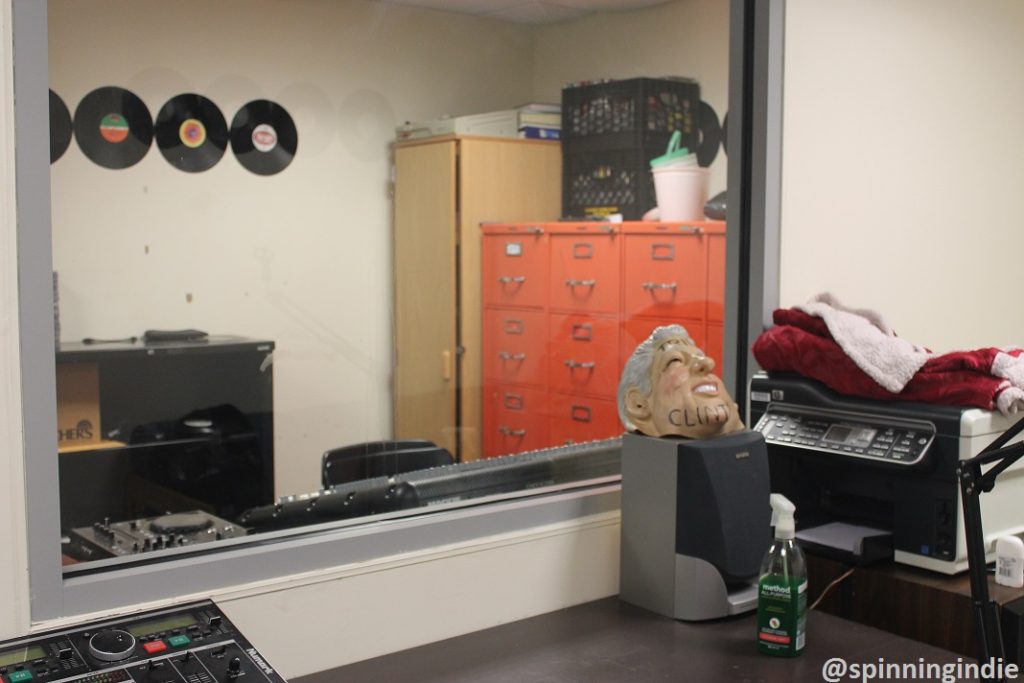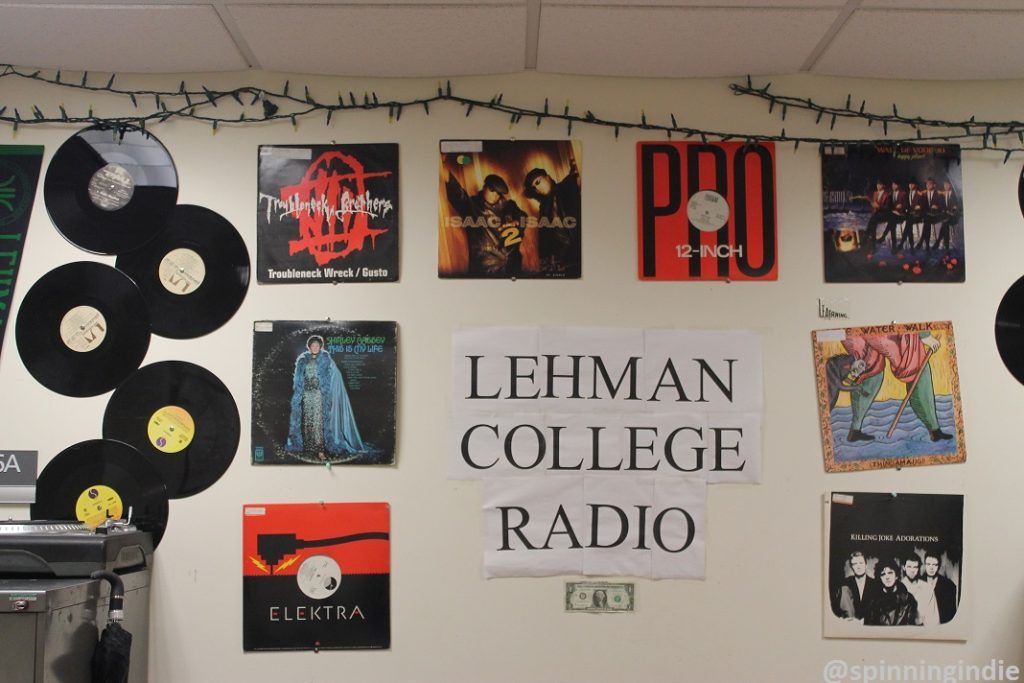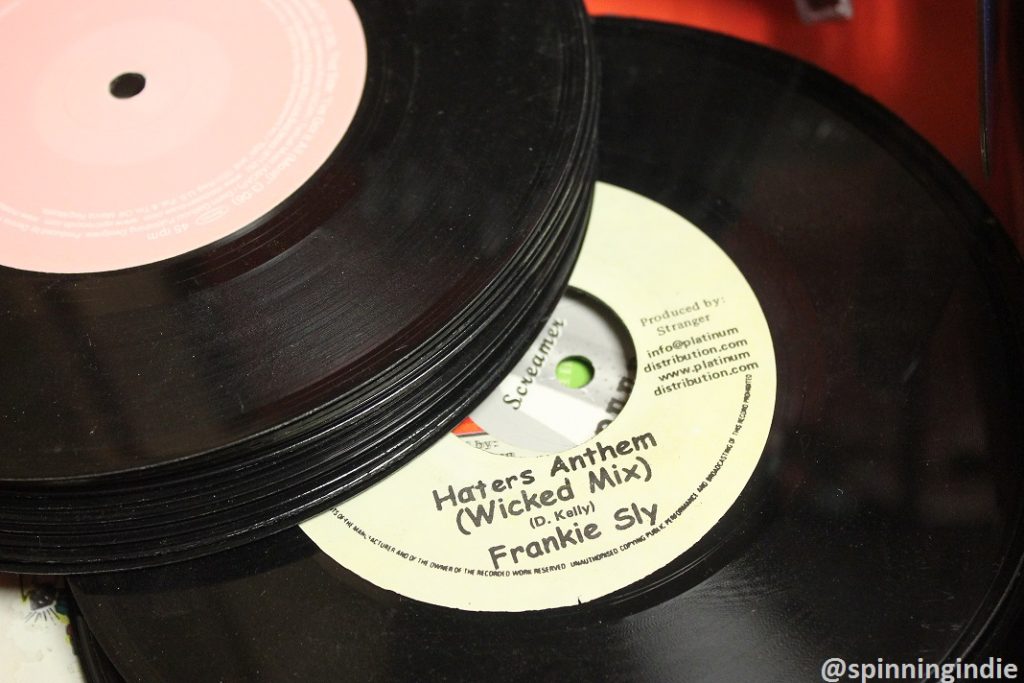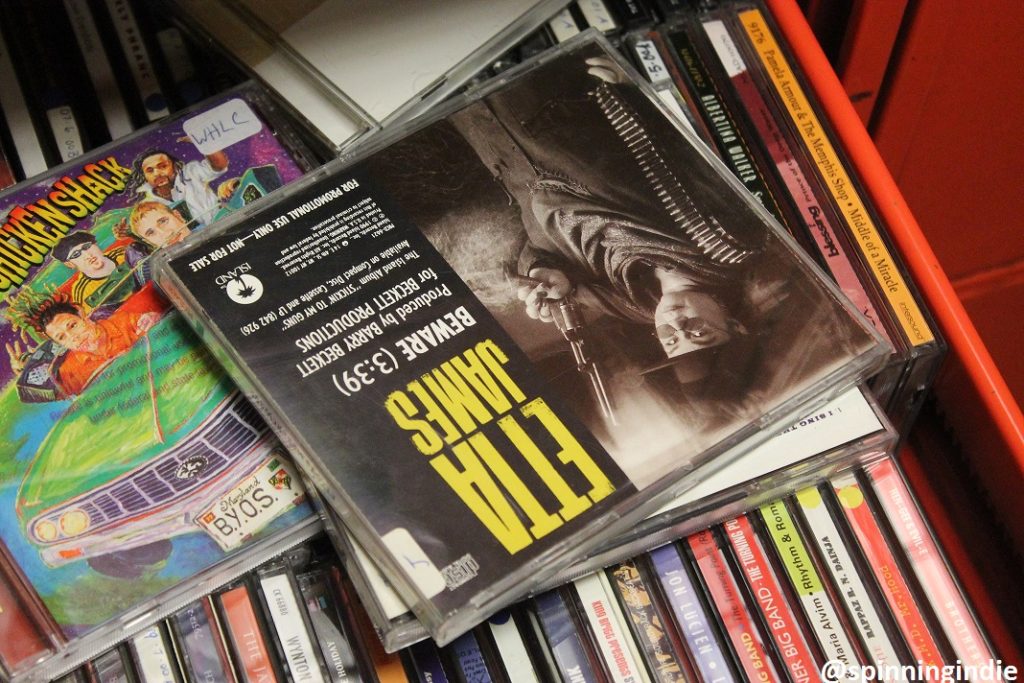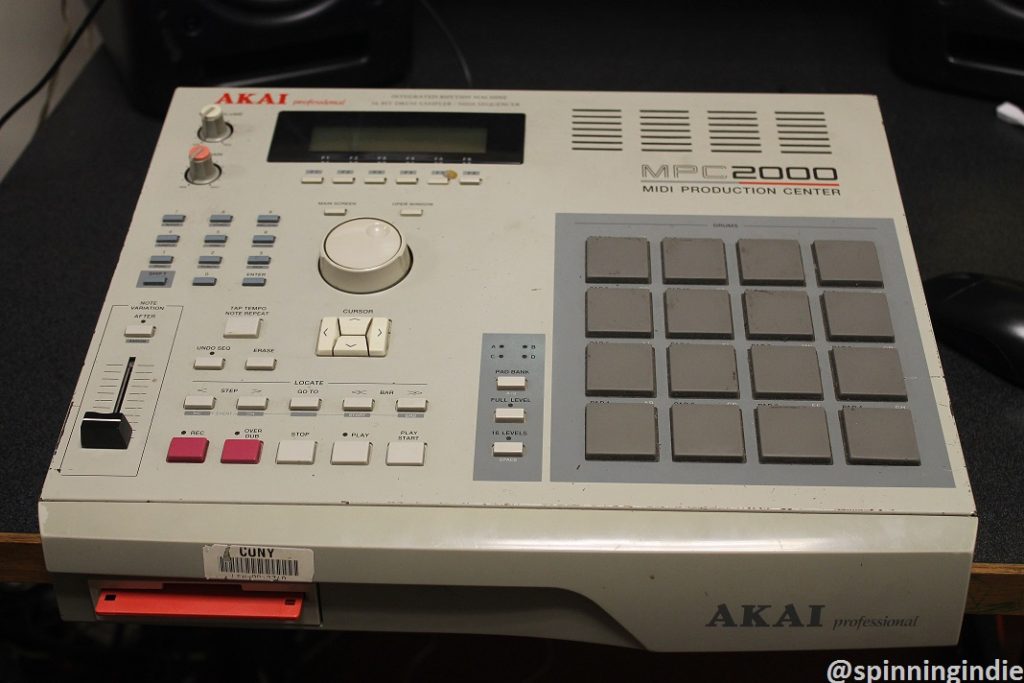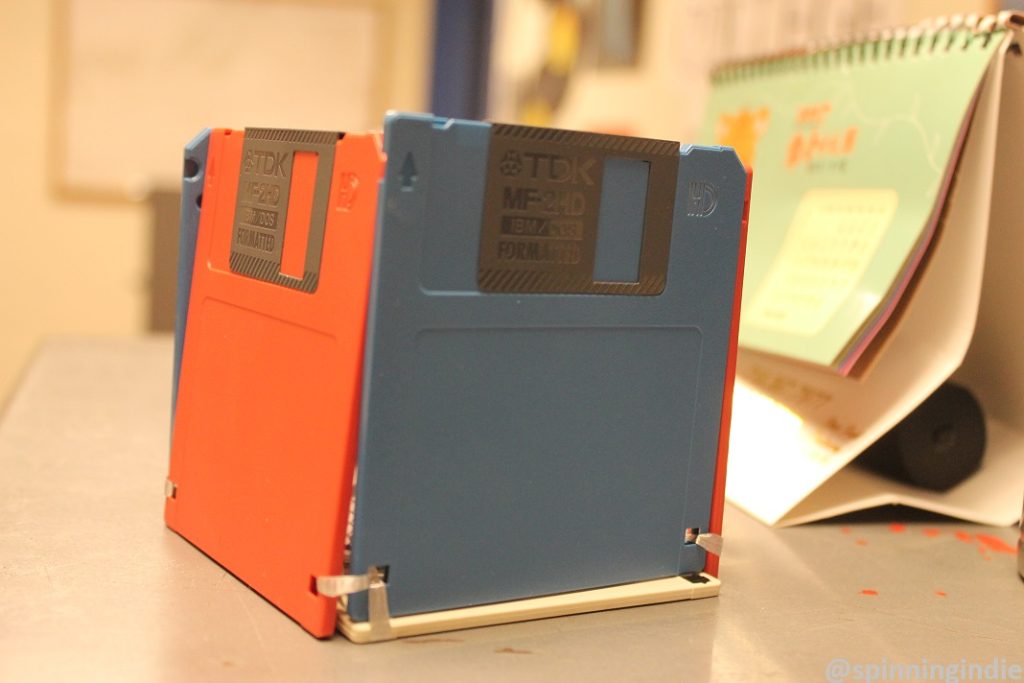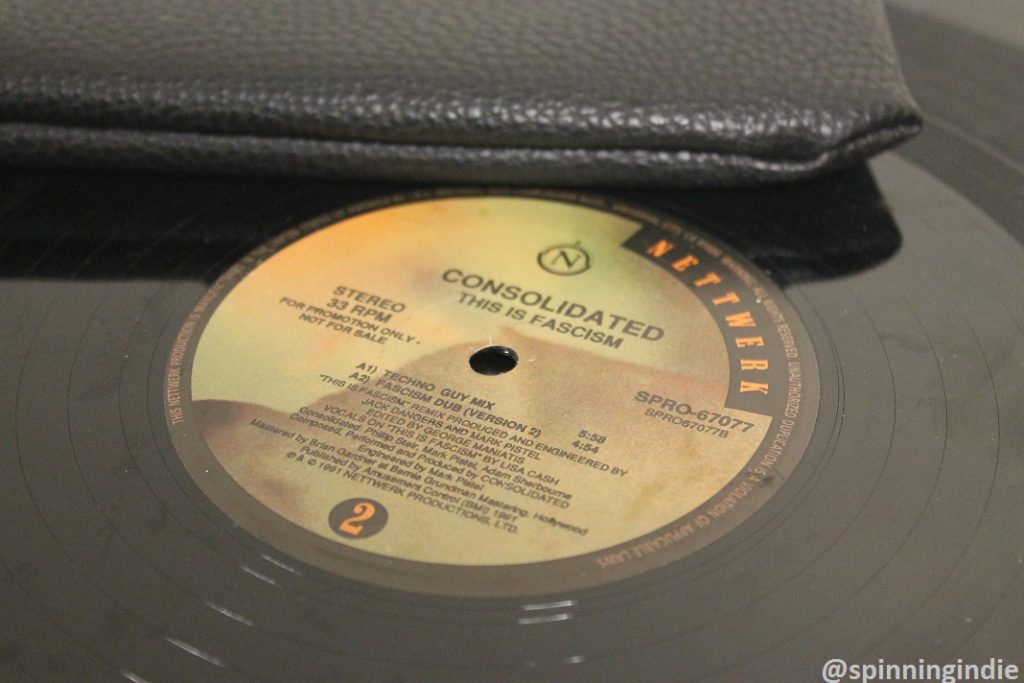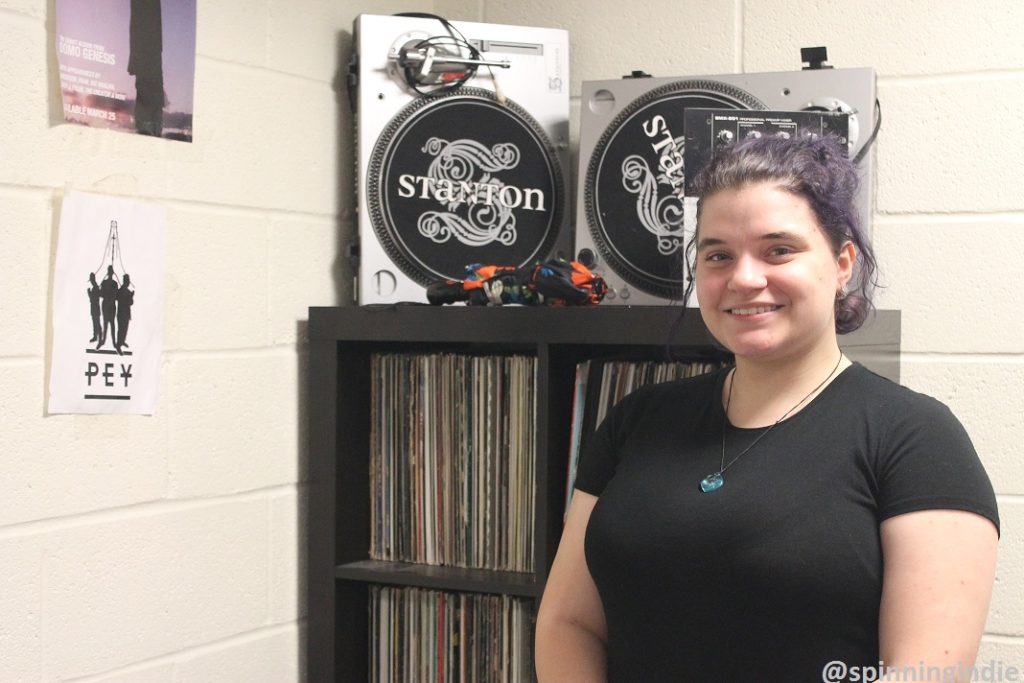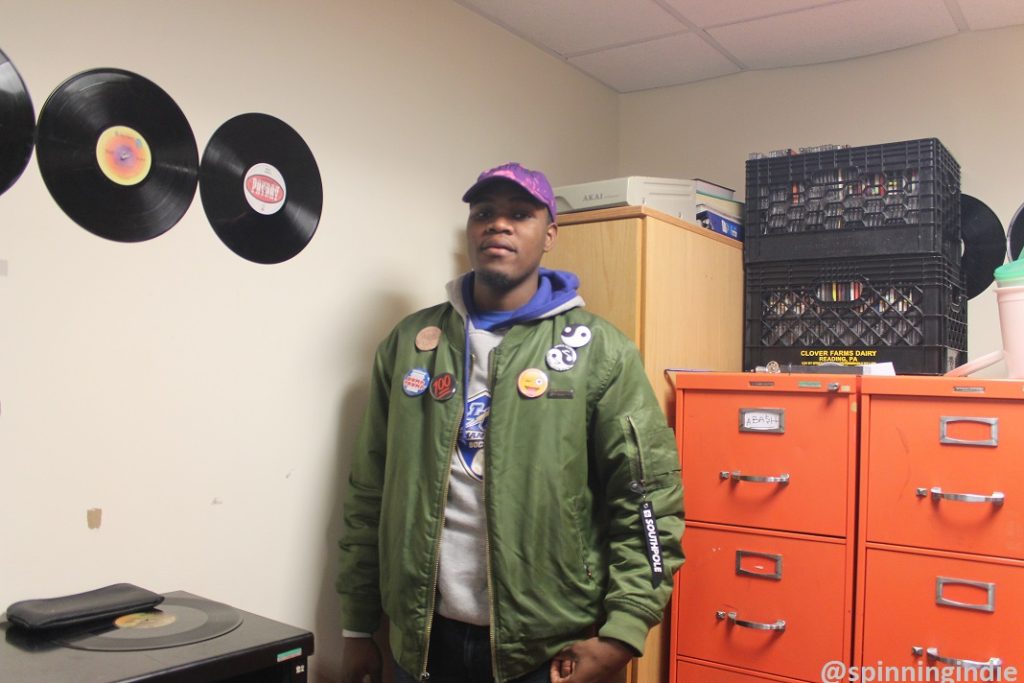Over spring break, I took my first trip to the Bronx and was glad to have been able to visit a couple of radio stations, including Lehman College Underground Radio aka WHCL at Lehman College on March 28, 2017. On a chilly Tuesday morning, I made my way to the City University of New York outpost and found my way to the Student Life building on the far edge of campus. I was later told that it’s not unusual for TV shows to get filmed there, as the setting looks like a “typical” college campus, with a mix of old and new buildings.
After being buzzed into the locked building, I headed downstairs to the station’s basement home. Although the person who I was supposed to meet wasn’t around, WHCL’s Social Media Director and Secretary Waverliey Torres offered to show me around the station.
Torres has been involved with WHCL since the first semester of her freshman year and said that she found out about the station through a friend. Now in her third year, she said that she first became involved in order to meet people and that it’s remained a “social” organization with a strong sense of community. She explained that it can be particularly challenging to connect with others at school since its a commuter campus with no student housing.
Although college radio has a long history on campus, dating back to at least the 1970s, the 2017 version of WHCL is quite different from Lehman College radio stations of the past. With around 10 to 15 participants, WHCL doesn’t have regularly scheduled radio shows.
Instead, students record programs, playlists or DJ mixes and post them to SoundCloud or use the WHCL studio to record original music. There’s a TuneIn stream, which I caught after my visit, hearing a mix of music. Especially since WHCL is an atypical radio station, I wasn’t surprised to hear that the students who I met there didn’t listen to much terrestrial radio. One student mentioned Beats1, SoundCloud, and podcasts as his main sources for “radio.”
WHCL does many live events on campus, playing music in the cafeteria at least twice a week and also spinning for various student clubs. Torres told me that they are trying to “enliven” student life at Lehman and are focused on “providing a sense of community” by helping to create more of a “college experience” at a place where students don’t tend to hang around campus.
While the history of WHCL is murky, Torres said that she’d heard that the station had been around for a long time and that it used to take up the entire floor of the basement. Today, it goes by many names, including WHCL, Lehman College Radio, and Lehman College Underground Radio. Station digs consist of a small lobby/office and two studios. One functions much like the on-air studio, while the other has a couch and is currently more of a “chill room.”
Artifacts in the space hint at its more traditional radio beginnings. A group of bright orange file cabinets is full of older CDs, including a large collection of soundtracks. Piles of LPs are stacked on top and a shelf in the lobby contains another stash of vinyl records. A few 7″ and 12″ records and LP covers decorate the walls, including Powerman 5000, The Faction and Goldfinger 7″s, Donovan and Tom Waits LPs, and 12″ singles from Too Short and U2.
These days, rap and hip hop are the main music genres represented on Lehman College Radio and, as mentioned, many of the station participants are interested in doing live mixing. Torres pointed out that the long history of hip hop in the Bronx is a big part of the reason why those styles of music are so beloved, telling me that WHCL’s “roots” are in hip hop and the “urban scene.” The station is also focused on local artists.
WHCL DJs do play other genres, including jazz, classical, reggae, and music from the 1980s and 1990s. Torres said that she likes all types of music, particularly EDM and K-Pop, adding, “it’s good to be open-minded.”
Torres grabbed a prized artifact from atop a storage unit, telling me about an intriguing, decades-old Akai drum sampler/MIDI sequencer that uses floppy disks. She said that they’d found all kinds of weird stuff at the station, including shoes, a video game system and unused disks. Some of the colorful blue and orange disks became fodder for station craft projects, including some cute DIY pencil holders.
A big upgrade to station decor happened after my visit, following a WHCL mural contest. A winning graffiti art design was painted on the wall of the “chill room” last week (see photos and video on Facebook and Instagram) and that space will be transformed into a recording studio for live artists and talk shows. It’s expected that the mural will also provide an aesthetically pleasing backdrop for video recordings that will get posted to the station’s YouTube channel.
A few reminders of politics were also sprinkled throughout WHCL, including a Bill Clinton mask in the production studio, an “I love Bernie” sticker adorned on a mini fridge in the lobby and Consolidated’s “This is Fascism” single on a shelf in the on-air studio. A student was also wearing a “Dump Trump” button, while another posted a flyer on the station’s door about upcoming student government elections for Lehman College.
I was surprised to see a few students passing through WHCL before 10am. Program Director Niya Capote appeared toward the end of my visit and said that the station is “…a nice place to come and relax between classes.” It was midterms, so Torres said that she actually came to the station in order to do some studying.
After she arrived, WHCL artist ABA$H popped by to catch a nap in the studio after his morning class was cancelled. A regular at the station, he typically comes by every day to record his own original rap music. When I asked him about the role that the Lehman College Radio plays in his life, he told me, “basically that’s all I do,” explaining that he goes to class and comes to the station, which is “like a family” for him. He added that he particularly enjoys the “energy” of the place and the opportunity for “freedom of expression.”
Thanks to everyone at WHCL for taking a break from midterms in order to chat with me about the station! This is my 128th radio station field trip report, with more to come from my New York, Virginia and Philadelphia-area travels. My most recent field trips can be found on Radio Survivor and a full list of all my station tour reports is compiled on Spinning Indie.

